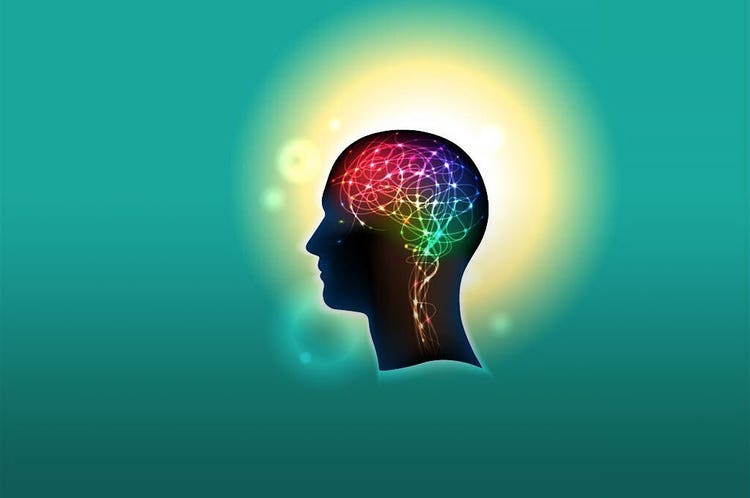From Spring Cleaning to Regulating Emotion

Although the link between exercise and heart health is well-known, researchers are only now starting to piece together what happens to our most complex organ – the brain –when we work up a sweat.
The brain-train years
For nearly a century, scientists have been exploring how physical activity affects brain function, but it wasnt until the 1970s that researchers were able to prove a strong link. It all started with psychomotor functioning, which controls how quickly we react to a situation. Through a series of studies, scientists started noticing that older people who take up regular exercise had improved eye-hand coordination, and performed better on reaction-time tests, than their sedentary counterparts. Then the tech boom came along, neuroimaging techniques such as MRI tests bridged the gap between human and animal studies, and researchers finally got a closer glimpse into the mechanisms at play. The idea that we could physically train to improve not only our bodies, but also our brain function, at any age, started to gain momentum.
The growing mind
So, what is it about exercise that affects our brain at the cellular level? This is where neuroplasticity comes in. The brain has the incredible ability to grow, change and develop based on our environment and experiences, and its this changing structure of the brain —its plasticity — that has allowed humans to survive for thousands of years. Professor Anthony Hannan, who is head of the Neural Plasticity Laboratory at The Florey Institute of Neuroscience and Mental Health in Melbourne, says that physical activity has the ability to strengthen the connection between neurons, which help transmit messages around our mind and body. Physical activity is good for every organ in your body. Your brain doesn’t sit up there in your skull in an ivory tower; its in constant bi-directional talk across the body with your other systems,he explains.
Most changes occur over time, and research shows individuals who are active often and for longer periods, usually with cardio, tend to perform better in brain tests. A decade ago, Professor Hannan and his team at The Florey Institute were the first to show that long-term voluntary activity, where mice could freely exercise on the wheel at any time, reduced the late onset of Huntingtons disease, which is a neurological condition that causes brain damage in people with the inherited altered gene. Later they were able to prove that regular exercise reduced depression, which is the most common psychiatric symptom of Huntingtons disease.
Theres’ also emerging evidence of an immediate effect of physical activity on the brain. In one 2014 study involving 25 healthy adults who rode on stationary bikes at different intensities for varying durations, researchers found even a single bout of aerobic exercise can promote neuroplasticity. They discovered that simply cycling at low-intensity for 30 minutes encouraged short-term rewiring and neuroplasticity in the brain, with the effect seen right through to the region that controls hand muscles, even though cycling only involved the legs.
Possibilities are endless
An exciting new area of research called epigenetics is the study of how the environment can influence our genes. Professor Hannan elaborates: Were all dealt a deck of genetic cardsat conception, and you have that your whole life. While the environment cant change the letters of DNA – the sequence – it can change which genes are turned on and off in particular cells throughout your lifetime. Combining physical activity with our unique genetic make-up, according to Professor Hannan, is one way of controlling our risk of developing specific diseases such as Alzheimers, dementia and other brain disorders.
With such promising results, its no wonder the international medical community has re-focused its attention to harnessing the power of exercise to keep the brain healthy and strong. So much so that doctors are now turning to physical activity to help not only with everyday motor function, but also to treat and manage disease.
Here are some other science-backed ways proving the benefits of exercise on our body and mind:
- Exercise boosts your brainpower: Regular exercise boosts memory, improves cognitive performance and physically expands the brain to make room for new connections between neurons. One of the largest longitudinal studies to prove this was the CARDIA study, which found that individuals who maintained higher levels of cardiorespiratory fitness between their mid 20s and early 50s scored higher on the verbal memory and psychomotor tests, compared to the groups with lower levels of fitness.
- Reduces toxic build-up in the brain: The amino acid glutamate is responsible for sending signals between the cells in our brain. But in some people, especially those with ALS, epilepsy or Huntingtons disease, overproduction of glutamate can cause a blockage and may lead to additional toxicity in the brain. A 2016 study published in Applied Physiology, Nutrition, and Metabolism found that exercise sweeps out excess amounts of the amino acid, in turn reducing the severity of the disease.
- Improves mood, reduces anxiety and helps tackle stress: Physical activity boosts the neurotransmitter pathways in our brains, which helps to regulate our emotional health. Regular physical activity, including simply walking or cycling instead of driving and taking the stairs at work, can contribute to brain health. Physical activity may reduce the negative effects of chronic stress and have an anti-depressant effect.
- Reduces cognitive decline in older age: Everyone’s at risk of the effects of aging and a decline in cognitive function, but the two don’t have to go hand-in-hand. Individuals who regularly exercise earlier in life and continue doing so in older age possess higher memory retention, and are at reduced risk of Alzheimer’s disease and other forms of dementia.